The pope was the tutor of European civilization during the central Middle Ages. At the end of the eleventh century, he inculcated to the ruling caste one revolutionary idea: the Crusade. It brought the best and the worst out of the warrior class, it was embraced by the masses, and it gave the pope unprecedented spiritual and political dominance. It became central to Europe’s identity and sense of mission. Although dressed in new clothes, the Crusade has remained the West’s defining Big Idea: redeeming the world and itself through wars in the name of lofty principles. The West, now under the leadership of the U.S., is still the Civilization of the Crusade. But that is about to end.
In this article, I intend to show that the medieval Crusades were such a potent experience that their influence on Western civilization outlasted the fall of papal autocracy. My purpose is not to tell again the story of the Crusades, but to explain the essence of the Crusades (quoting from the best scholarship) and to draw from it some insight on the inherited character of the West. The focus will be on what the Crusades did to the West, including in its relationship to the East. What is the point, you ask? Like individuals, civilizations have an interest in looking back at their early life, especially when their adult life starts to unravel and they realize that everybody hates them.
I do not pretend, of course, that the medieval Crusades provide a sufficient explanation for the history of colonialism and imperialism of the modern West, but only that they shed some light on it, not by way of comparison—that the U.S. have been acting like Crusaders is obvious enough, especially in the Arab world—but as a real, significant, historical cause.
Let me add two more preliminary remarks. First, its seems that every nation or civilization has a personality, a particular “will to power” that determines its patterns of behavior with other communities.[1] But only a dominant minority participates actively in that collective anima. At every level, the elite move the social body and forge its destiny.[2] Therefore, when I say that the Crusade is the essence of the West, I do not mean that the common folk necessarily support Western crusading adventures, but that crusading has remained a core existential principle of the Western elite’s culture.
Secondly, my aim is not to judge people, but to analyze the ideas that have directed Europe’s trajectory. Intelligent, courageous and self-sacrificing individuals can be moved by ideas that will prove disastrous in the end and will be regarded as delusional by future generations. Historians of the Crusades have given up trying to explain the “idea of the Crusade” as a mere religious pretext for material gain. In the words of Jonathan Riley-Smith, author of The First Crusade and the Idea of Crusading:
In the light of the evidence it is hard to believe that most crusaders were motivated by crude materialism. Given their knowledge and expectations and the economic climate in which they lived, the disposal of assets to invest in the fairly remote possibility of settlement in the East would have been a stupid gamble. It makes much more sense to suppose, in so far as one can generalize about them, that they were moved by an idealism which must have inspired not only them but their families.[3]
It is true that people tend to cling to ideas that they see as advantageous to themselves. But if Crusaders were looking for personal gain, it was more in terms of social credit. From the twelfth century, explains Christopher Tyerman, author of God’s War, “crusading acted as a mechanism of social advancement … a means of entry to the ranks of the knightly and respectable for parvenus, a ticket of admission into the secular social elite.”[4] What that means is simply that the Crusade was part of the value system of the dominant class — that is, the dominant value system.
In a 2006 review of recent developments in the historiography of the Crusades, Norman Housley wrote:
Although there is much that is contested in the history of crusading, one advance that has been made in the course of the last half century would probably be disputed by nobody: that the crusades played a central rather than a peripheral role in the development of medieval Europe.[5]
“There can be no doubt,” Housley adds, “that crusading was one of the features of medieval life that gave Catholic Europe its remarkable rate of growth. This established an inherent dynamism that characterized the central Middle Ages.”[6]
One of the most remarkable aspects of this impulse is its sudden manifestation. “It was not the culmination of an evolution, but the almost spontaneous outpouring of a prodigious power of collective animation,” wrote French historian Paul Alphandéry around 1930.[7] We can pinpoint the day (27 November 1095) when the call fell like the Holy Spirit on a crowd, before being preached by an army of missionaries.
The First Crusade (1095-97) was a success, celebrated in what can be regarded as the earliest propaganda campaign of global scale. The First Crusade became for Westerners what the Trojan War was for ancient Greeks.[8] Christopher Tyerman writes:
The scale and rapid production of histories of the First Crusade by eyewitnesses and others eager to interpret the startling events didactically finds no parallel in medieval historiography. Within a dozen years of Jerusalem’s capture, at least four full eyewitness accounts, three major western histories and part of the great Lorraine version by Albert of Aachen were being circulated along with a bevy of other accounts, more or less derivative, imaginative or polemic. While originating in monasteries and cathedrals, these texts reflected and excited secular interests, for example in local heroes or national pride. Most of the histories sculpted stirring tales of faith, bravery, suffering, danger, tenacity and triumph.
The theologians distilled the message of God’s immanence and Christian duty; the no less artful eyewitnesses provided accessible tales of miracles and butchery. One of the very earliest, the Gesta Francorum, included elaborate scenes with stereotype exotic Orientals declaiming extravagant, bombastic nonsense much in the style of the verse chanson de geste. Naturalistic representation, especially of the enemy, did not feature.[9]
The epic stories of the First Crusade had such a lasting impact that, when a Second Crusade was preached in 1145, the response was, again, overwhelming. “I opened my mouth, I spoke, and at once the Crusaders have multiplied to infinity,” Bernard of Clairvaux wrote to the pope. “Villages and towns are now deserted. You will scarcely find one man for every seven women. Everywhere you see widows whose husbands are still alive.”[10]
Although it was a papal idea from the beginning, the Crusade grew deep roots in the minds and hearts of the secular ruling class, and invaded every region of lay culture. Some vernacular accounts of the First Crusade, such as the immensely popular Chanson d’Antioche, competed with the genre of apocryphal gospels in their lavish use of prophecies, visions, miracles and other signs of divine Providence. Both genres actually merged in the international best-sellers of the Grail corpus: Chrétien de Troyes’s seminal romance Le Conte du Graal, written around 1180, was woven around esoteric icons of the Crusade: the grail, containing the host (i.e., the body of Christ) is a symbol of the Holy Sepulchre, while the “bleeding lance” is the Holy Lance whose spearhead was miraculously discovered in Antioch by the besieged Crusaders.[11] It is no exaggeration to say that implicit evocations of the Crusade are present in all medieval lay literature, from the earliest chansons de geste to the latest Arthurian romances.
Through the Crusades, North-Western Europe made a place for itself in history. “Before their inception,” wrote Steven Runciman in his unsurpassed History of the Crusades, “the centre or our civilisation was placed in Byzantium and in the lands of the Arab caliphate. Before they faded out the hegemony in civilisation had passed to Western Europe.”[12] In other words, Western Europe became a civilization in its own right through the Crusade. The end of the Crusades is traditionally dated in 1291, when the city of Acre, the last stronghold of the Latin Kingdom of Jerusalem, fell to the Mamluks, leaving no possible landing site for new expeditions. Strictly speaking, therefore, the Crusades lasted two centuries. Modern historians have conventionally numbered them from one to eight or nine, but in reality, there was an uninterrupted flow of military campaigns of various sizes and origins to the Middle East. Between the First and the Second Crusade, for example, at least six expeditions were sent, which are not counted as full-fledged Crusades but as reinforcement to the Latin States carved during the First Crusade. The Crusades can therefore be considered as one single war lasting two centuries, the longest in human history.
In fact, many more wars would continue to be waged under papal banner, with the full theological arsenal of the Crusades, until the late sixteenth century. In the fifteenth century alone, no less than seven papal bulls for Crusades were promulgated.[13] As Christopher Tyerman sees it:
Crusading did not decline after 1291. It changed, as it had over the previous two centuries since the First Crusade. … the crusade mentality, transmitted through long habit, current liturgy and constant renewal in fresh appeals for alms, tax, purchase of indulgences and, occasionally, armed service, framed a way of regarding the world. This mentality, widely dispersed through society, allowed the expression of faith and identity through social rituals and religious institutions without the necessity of individual political or military action. The relative scarcity of crucesignati was masked by cultural ubiquity. Independent of fighting and wars, crusading evolved as a state of mind; a means of Grace; a metaphor and mechanism for redemption; a test of human frailty, Divine Judgement and the corruption of society. Crusading became something to be believed in rather than something to do.[14]
The Crusade introduced a new way of individual salvation: penitential warfare. God, speaking through His vicar on earth, now granted full remission of sins (thence a place in Heaven) to whoever would swear to travel to the Holy Land and kill infidels or be killed by them. According to the historian Orderic Vitalis, writing around 1135, “the pope urged all who could bear arms to fight against the enemies of God, and on God’s authority he absolved all the penitent from all their sins from the hour they took the Lord’s cross.”[15]
Judging from the six partial versions of Pope Urban II’s speech preserved in chronicles, it is unclear if he presented things in so explicit terms. He may have simply decreed, as reported by Bishop Lambert of Arras, a direct witness: “Whoever for devotion alone, not to gain honor or money, goes to Jerusalem to liberate the Church of God can substitute this journey for all penance.”[16] And he may have added, as reported by Fulcher of Chartres: “All who die on the way, whether by land or by sea, or in battle against the pagans, shall have immediate remission of sins. This I grant them through the power of God with which I am invested.”[17] He probably was the first to give a radically new interpretation of Matthew 10:38, as reported by Robert the Monk: “Whoever does not take up his cross and follow me is not worthy of me.”[18]
In any case, full and immediate remission of all confessed sins for all cruce signati (those marked with a cross sewn on their clothes) is how the theology of the Crusade developed over the years, thanks to apologists like Innocent II and St Bernard of Clairvaux, or the great canonist Gratian.[19] In 1187, in the letter Audita tremendi that launched the Third Crusade, Pope Gregory VIII declared:
to those who with contrite hearts and humbled spirits undertake the labor of this journey and die in penitence for their sins and with right faith we promise full indulgence of their faults and eternal life; whether surviving or dying they shall know that through the mercy of God and the authority of the apostles Peter and Paul and our authority they will have relaxation of the satisfaction imposed for all their sins, of which they have made proper confession.[20]
Note that only confessed sins would be forgiven (annual oral confession was to become mandatory for Roman Catholics at the 1215 Lateran Council).
The Crusade was a new religion. Guibert de Nogent, one of the most enthusiastic chronicler of the First Crusade, remarked that before, knight could only attain salvation by giving up their way of life and become monks, but “God has instituted in our time holy wars, so that the order of knights and the crowd running in their wake … might find a new way of gaining salvation.” The Crusade, declared a fourteenth-century master of the Hospitaliers, became “the nearest route to Paradise.”[21] Welsh priest Adam of Usk went further in his Chronicon (early fifteenth century):
Any man who will not set off at once
for the land where God lived and died,
any man who will not take the Holy Land’s cross
will have but little chance of going to heaven.[22]
Of course, material gain was not excluded for the survivors. According to Archbishop Baldric of Bourgueil, Urban II had stated: “The possessions of the enemy, too, will be yours, since you will make spoil of their treasures and return victorious to your own; or empurpled with your own blood, you will have gained everlasting glory.”[23] Yet the evidence suggests that most of those who joined the Crusades did so to save their souls. As strange as it may seem to us today, they believed that the pope knew what he was talking about when he distributed remissions of sins (called “indulgences”) in exchange for military service. They trusted that this imaginary currency was legal tender in the Otherworld.

The vow of “taking the cross” was binding, and failure to act upon it would cause excommunication, tantamount to a sentence to hell. Fortunately for those who had ceded to peer pressure but then found themselves excuses, the indulgence of the Crusade was extended to those who, instead of going themselves after taking the vow, sent another in their place or gave money to finance the crusades: this dispensation in return for a money payment was called the “redemption of vow.” From the pontificate of Alexander III (1159-1181), explains Christopher Tyerman,
Vow redemption helped alter radically the funding of crusading, the manner in which the cross was preached, the methods of recruitment and planning, and even the reputation of the exercise itself as the system became vulnerable to charges of “crosses for cash”.[24]
The offer of indulgences remained part of a general penitential system, increasingly commercial as redemption of vows or even the performance of any particular meritorious act gave way to simple sale and payment. The doctrine of a Treasury of Merits, a sort of divine bank account laid up by God to be drawn on by the penitent faithful, was perfected by Clement VI.[25]
Thus the gospel of salvation by war slowly evolved into the gospel of salvation by money. According to Norman Housley, “the shift that occurred in crusade preaching towards the raising of cash alongside or instead of volunteers … was certainly a major constituent of the trend which conflated the devotional emphasis on works with the substantial volume of specie that could be released in an increasingly commercial society.”[26]
For the anecdote, alongside this racket came the black market: in the years 1226-1228, scandals broke out in Germany and Italy, when impostor preachers accepted the redemption of the Crusade vow for more or less large sums, including one who managed to pass himself off as the Pope, and who, for nearly six weeks, relieved a crowd of Crusaders and pilgrims from their vows.[27]
More importantly, the selling of indulgence, an outgrowth of the Crusade, was the central charge against the papacy in Martin Luther’s perfectly reasonable Ninety-five Theses, and one of his reasons for later calling the pope “the real Antichrist who has raised himself over and set himself against Christ” in his Smalcald Articles. Indeed, it is hard to deny that, by some Luciferian hubris, the popes undermined their own credibility and the unity of European Christendom, and plunged Europe in its bloodiest wars ever.
Making Jerusalem the Capital of Europe
It is said that the Crusades united Europe. French historian Francois Guizot stated in his lectures at La Sorbonne in 1828:
The first character of the crusades is their universality; all Europe concurred in them; they were the first European event. Before the crusades, Europe had never been moved by the same sentiment, or acted in a common cause; till then, in fact, Europe did not exist. The crusades made manifest the existence of Christian Europe.[28]
That is true to some extent, but that “common cause” should not be confused with political unity or even internal peace, unless we call perpetual war “unity” and “peace”. The Crusades did not bring peace inside Europe, as the popes were betting on. The Third Crusade is a case in point. Before leaving for it, the French and the English kings were at war over territorial claims. Although the Pope convinced Philip II and Richard I to sign a truce before departing for the Holy Land, their relationship worsened rather than improved during the expedition. As soon as they returned home (that is, after Richard was ransomed from the jail of Leopold of Austria, who accused him of having arranged the murder of Conrad of Montferrat), they resumed their feud, which would later grow into the Hundred Years War (1337-1453).
As I wrote in “The Failed Empire,” one of the problems with the Crusades is that they were meant to unite Europe around Jerusalem. “By the Crusades, the popes told Europeans that the cradle of their civilization was a city at the other end of the world, disputed by two other civilizations (the Byzantine and the Islamic), and asked them to fight for it as if their own civilization depended on it. There cannot be a more anti-European project.”
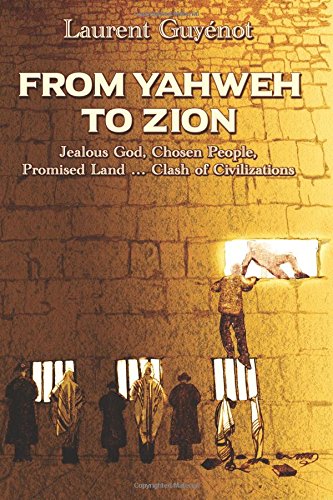
European obsession with Jerusalem did not start with the Crusades. Since the beginning of the eleventh century, writes Jonathan Riley-Smith,
Large numbers of people were regularly departing for Jerusalem with the encouragement of the monasteries and there was traffic right up to the eve of the crusade and beyond. … In fact the attitude of eleventh-century Christians towards Jerusalem and the Holy Land was obsessive. Jerusalem was the centre of the world, the spot on earth on which God himself had focused when he chose to redeem mankind by intervening in history; at the same place, at the end of time, the last events leading to Doomsday would be enacted.[29]

It was Urban II’s stroke of genius to sell the military expedition as a penitential pilgrimage to Jerusalem:
There is no doubt that Urban preached the crusade at Clermont as a pilgrimage and many of the measures he took brought it into line with pilgrimage practices. He extended the protection of the Church to crusaders, decreeing that their property was to be inviolate until their return. … Urban’s introduction of the cross to be sewn on the crusaders’ clothing must also have been associated with the pilgrimage to Jerusalem.”[30]
In this way, Urban II combined into a new synthesis two elements that were traditionally considered incompatible: the fascination with Jerusalem as a destination for pilgrimage — an aspect of Christian piety — and the warrior ethics of the feudal class inherited from their barbarian origin. That combination proved explosive.
It must be stressed that Jerusalem was not what the Byzantine basileus Alexios Komnenos was interested in when he asked for Western help. It had not been part of the Byzantine Empire since it had been conquered by the Arabs in 638, and Syria itself was peripheral to the Empire. His primary aim was to regain Anatolia, starting with Nicaea (today Iznik), which the Turks had conquered in 1081 and made the capital of their Sultanate of Rum, a mere hundred kilometers from Constantinople. As a secondary objective, Alexios hoped to recover Antioch, a prosperous and strategically important Greek city that had always belonged to the Empire.
Until 1073, Jerusalem had been governed in the name of the Fatimid caliphs, who respected the authority of the basileus and of the Patriarch of Jerusalem over Christian shrines, and let Christians worship freely.[31] Orthodox Christians had no complaints, and Syrian Jacobites and other non-Orthodox Christians even preferred Muslim to Byzantine rule. It was only when the Seljuk Turks took over Syria that things got complicated for Jerusalemite Christians and Western pilgrims. But the Fatimids retook Jerusalem from the Seljuks one year before the Crusaders came before its walls, and the basileus was more than willing to let them rule it again. For Westerners, however, the Crusade was about “liberating” Jerusalem. They rejected the peace offer of the Fatimids, assaulted the Holy City, and massacred its population. Raymond of Aguilers, who witnessed the event, wrote: “in the Temple and portico of Solomon, Crusaders rode in blood up to their knees and the bridles of their horses. Indeed, it was a just and splendid judgment of God, that this place should be filled with the blood of the unbelievers, since it had suffered so long from their blasphemies.” This, he claimed, fulfilled Revelation 14:20: “And the winepress was trodden without the city, and blood came out of the winepress, even to the horse bridles.”[32] Another chronicler, the anonymous author of the Gesta Francorum, wrote: “our men rushed round the whole city, seizing gold and silver, horses and mules, and houses full of all sorts of goods and they all came rejoicing and weeping from excess of gladness to worship at the Sepulchre of our Savior Jesus, and there they fulfilled their vows.”[33] This is the event that deserved to be celebrated as “the greatest event since the resurrection,” according to chronicler Robert of Rheims.[34]
We should not underestimate the impact of such narrative on Western mentality. News of the “liberation” of Jerusalem silenced critics of the concept of holy war in Europe, and its celebration definitely installed the Crusade as a central paradigm in Western culture. From then on, Westerners saw themselves as the guardians of the belly button of the world. It became part of their identity. Their obsession only grew after Jerusalem was recaptured by Salah al-Din (Saladin) in 1187 (in conditions of humanity that shamed Western chivalry), and with every new failed attempt to recover it.
One of the greatest irony of the Crusades is that Jerusalem was temporarily recovered in 1229 by the Holy Roman emperor Frederick II, who went there while excommunicated by Pope Gregory IX, and got it back — together with Bethlehem and Nazareth — by diplomatic negotiation, without shedding a drop of Muslim or Christian blood. The Pope condemned this peaceful approach, denouncing as especially sinful Frederick’s recognition of the Muslims’ rights on the Mosque of Omar. In 1241, he decreed a Crusade against Frederick, with full indulgence to those who took part, and the possibility for those who had planned to go to the Holy Land to commute their vows to fight against Frederick instead.[35]
In 1248, after Jerusalem had returned to the Muslims, French king Louis IX led the Seventh Crusade, which ended with his capture by Sultan Turanshah. Louis IX — posthumously revered as Saint Louis — is a good illustration of the curse that Jerusalem had become for Europe. He abandoned his kingdom again for another Crusade in 1270, and died of dysentery in Egypt that same year. It was reported that his last words were “Jerusalem! Jerusalem!” — the city he never saw.[36]
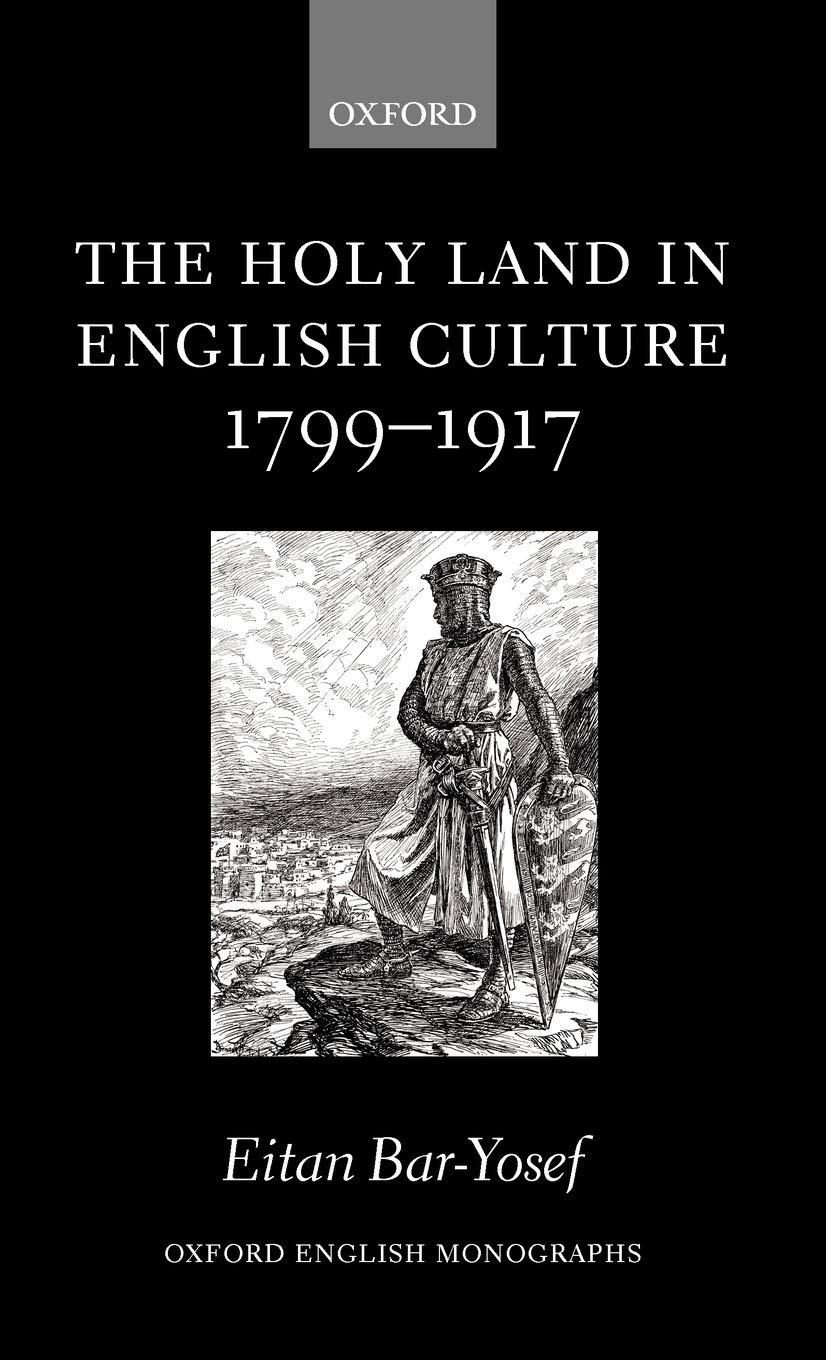
All Europe, it seems, has been weeping over Jerusalem ever since. “The clerical and lay elites of western Europe,” writes Christopher Tyerman, “found it almost impossible to let go of the Holy Land as a political ambition or vision of perfection. Throughout the fourteenth and fifteenth centuries, governments, moralists, preachers and lobbyists returned again and again to a subject in which practical and moral objectives were fused together.”[37] In fact, Jerusalem never left the back of the Westerners’ mind until it was finally recaptured by Christian troops on December 9, 1917. When General Edmund Allenby entered the city on foot in a solemn procession, he proclaimed “the end of the Crusades.” The London Punch published an illustration showing Richard I looking down on Jerusalem, and nodding contentedly, “My dream comes true!” (printed on the cover of Eitan Bar-Yosef’s book, The Holy Land in English Culture 1799-1917: Palestine and the Question of Orientalism, Clarendon Press, 2005).
Note that the Anglican Church and later British offshoots of Calvinism had long rejected papal authority, and officially condemned the notion of penitential warfare. Yet there is no denying that the obsession with Jerusalem remained strong throughout the Victorian age, and played a significant part in the British support for Zionism. It must be said, though, that British Zionism had been stimulated by the French’s attempt to conquer Egypt and Palestine from the Ottomans in 1799. That quasi-crusade by the young General Bonaparte, although it ended in failure, contributed in no small way to his self-made legend, and that in itself testifies to the persisting attraction of Jerusalem in the collective unconscious of the French. As Bonaparte was fighting in Syria, there were reports in the French official press about his intention to offer Jerusalem to the Jews. The authenticity of his “Proclamation to the Jews,” discovered in 1940, is dubious[38] (an informed discussion can be read here), but the Napoleonian episode should not be excluded from the debate on the origin of Zionism.[39]
It was the Crusade that first sealed an unnatural but unbreakable bond between Europe and Jerusalem, making the possession of the center of the world an idée fixe in Western mind. Moreover, the obsession of conquering Jerusalem turned Western Christendom into a mimicry of Israel. According to one account by Robert of Rheims, Urban II had said in Clermont, “Take the road to the Holy Sepulchre, rescue that land from a dreadful race and rule over it yourselves, for that land that, as scripture says, flows with milk and honey was given by God as a possession to the children of Israel.”[40] Old Testament rhetoric was always part of the Crusades, and for Innocent III, the crusading pope par excellence, “the trials of the Old Testament Israelite heroes were of contemporary relevance not just oratorical resonance.”[41] The ghost of Joshua, rather than Christ, hovered above the Crusaders. Catholics like to blame Protestants for their emphasis on the Old Testament, but the trend had been started by the popes’ Crusade rhetoric.
Papal Theocracy and the Alienation of Eastern Christendom
The idea of a holy war to the Holy Land did not originate from Urban II (1088-1099), but from his mentor Gregory VII (1073-1085), the most energetic promoter of what became known as the Gregorian Reform — “the first European revolution” in Robert I. Moore’s view.[42] Gregory VII had planned to lead personally an army against the Eastern Muslims. Norman Cantor explains his two main objectives:
Such a crusade would be an expression of the supreme pontiff’s moral leadership of the western world (which was one of Gregory’s cardinal doctrines) and would bring the peoples of the north into closer relations with Rome. Finally, the Latin invasion of the Orient could be expected to take a long step toward the assertion of papal hegemony in Greek Christian lands.[43]
It was left to the charismatic Urban II to bring the project to fruition. In term of the first objective, it was a success. Before he made his famous sermon in November 1095, Urban was in a dire position: he had been expelled from Rome, where Emperor Henry IV had installed his own pope Clement III (1080-1100). According to Christopher Tyerman, “Urban II sought to use the mobilization of the expedition as a cover to reclaim the pope’s position in Italy and demonstrate his practical leadership of Christendom, independent of secular monarchs.”[44] The show of strength was all the more spectacular that, in that very same Council of Clermont, Urban confirmed the excommunication of the King of France Philip I for his adulterous marriage with Bertrade of Montfort.[45] Urban thereby demonstrated that he could come into French territory, declare the French king unfit, and mobilize under his own banner the cream of French knighthood. It was a masterful coup d’état, and the real beginning of papal suzerainty over European kings.
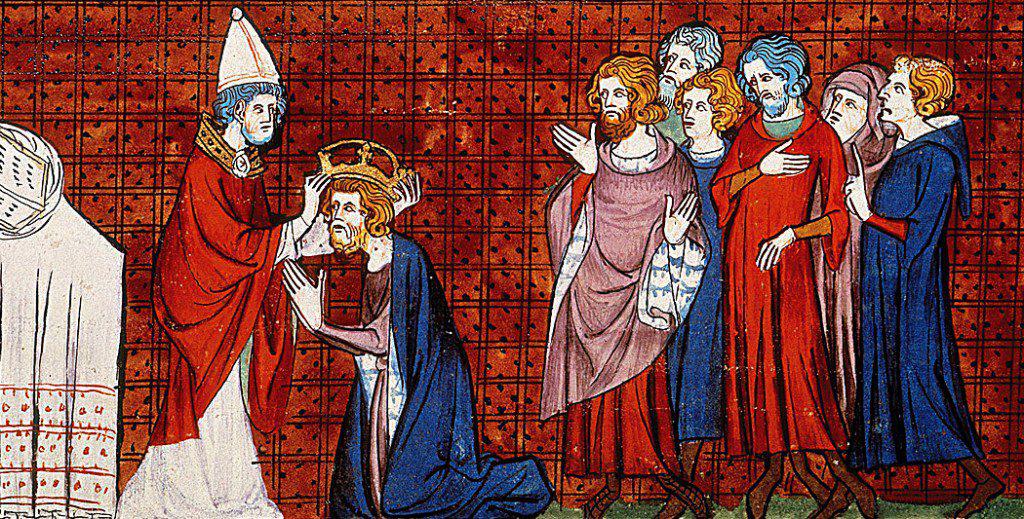
With each new Crusade, the papal stranglehold became stronger. Ultimately, popes would use the Crusade to further all their policies, branding their enemies as fit targets for holy war, and promising the remission of sins to any who would agree to fight them. Crusades were launched against the pope’s political enemies, such as the Hohenstaufens, as well as against any principality harboring “heretics” (in practice, communities who rejected papal authority), such as the Cathars in the County of Toulouse in 1209-29, or the Hussites of Bohemia in 1420-71. The Crusade, comments Norman Housley, “made it easier to move from a non-violent response towards organized dissent, to one that was coercive.”[46] It facilitated the transformation of Europe into what Robert I. Moore has called a “persecuting society.”[47]
In terms of the pope’s second objective, affirming papal supremacy over the Greek Church, the Crusades were an utter failure. The Crusades made the schism permanent and irreversible. Tensions had accumulated from the beginning of the First Crusade, which was not the kind of help that Alexios Komnenos was expecting, as Steven Runciman shows:
No government is unwilling to make allies. But when these allies send large armies, over which it has no control, to invade its territory, expecting to be fed and housed and provided with every amenity, then it questions whether the alliance is worth while. When news of the Crusading movement reached Constantinople it aroused feelings of disquiet and alarm.”[48]
These feelings proved justified when the Norman Bohemond of Tarento, one of the leaders of the First Crusade, seized Antioch for himself, and later tried to mobilize a Crusade against Constantinople itself, with papal support.
The Second Crusade, which didn’t even have the pretext of helping Constantinople, worsened the relationship between the Franks and the Byzantines. The Crusaders accused the emperor Manuel I Komnenos of the worst treachery, but Steven Runciman sets the record straight:
The behaviour of the Crusaders when they were guests in his territory was not such as to increase the Emperor’s liking for them. They pillaged; they attacked his police; they ignored his requests about the routes that they should take; and many of their prominent men talked openly of attacking Constantinople. Seen in such a light his treatment of them seems generous and forbearing.[49]
The breaking point was, of course, the Fourth Crusade diverted against Constantinople. Western historians have struggled to explain it, but historians of Byzantium, such as George Ostrogorsky, consider it “the almost inevitable result of early developments.”
Since the schism between the Churches, and particularly since the beginning of the crusading movement, hostility towards Byzantium had been growing in the West. … Face to face with the obvious weakness and helplessness of the Byzantine Empire under the Angeli, Western hatred turned to thoughts of conquest. … When Venice threw its commercial and political interests into the balance, the idea became a reality. The increasing secularization of the crusading spirit reached its logical conclusion: the crusade became an instrument of conquest to be used against the Christian East.[50]
Innocent III expected this happy turn of events to hasten Greek submission to the “Mother Church.” But, as Steven Runciman explains, his hope was never fulfilled.
Instead, [the Crusaders’] barbarity left a memory that would never be forgiven them. Later, East Christian potentates might advocate union with Rome in the fond expectation that union would bring a united front against the Turks. But their people would not follow them. They could not forget the Fourth Crusade. … the whole Crusading movement had embittered their relations, and henceforward, whatever a few princes might try to achieve, in the hearts of the East Christians the schism was complete, irremediable and final.[51]
Reuniting Islam and Reviving Jihad
The Byzantines had developed a relatively peaceful co-existence with the Fatimid Caliphate. “In the middle of the eleventh century,” writes Steven Runciman, “the tranquility of the east Mediterranean world seemed assured for many years to come. Its two great powers, Fatimid Egypt and Byzantium, were on good terms with each other.”[52] Christians worshipped freely in Jerusalem, and Muslims had their mosque just outside the walls of Constantinople (it was burnt down by the Franks during the Fourth Crusade).
The Seljuk invaders from the East were the common foes of the Fatimids and the Byzantines. But for the unsophisticated Crusaders, all Muslims were the same. The Franks disturbed Constantinople’s alliance with the Fatimid Caliphate, and after the collapse of the latter, they continued to damage Byzantine diplomacy, which had learnt “how to play off the various Moslem princes against each other and thus to isolate each of them in turn.”[53] For example, the Crusaders’ decision to attack Damascus during the Second Crusade was particularly ill-advised. Runciman writes:
It was a decision of utter folly. … of all the Moslem states the Burid kingdom of Damascus alone was eager to remain in friendship with the Franks; for, like the farther-sighted among the Franks, it recognized its chief foe to be Nur ed-Din. Frankish interests lay in retaining Damascene friendship till Nur ed-Din should be crushed, and to keep open the breach between Damascus and Aleppo. To attack the former was, as the events of the previous year had shown, the surest way to throw its rulers into Nur ed-Din’s hands. … To the visiting Crusaders Aleppo meant nothing, but Damascus was a city hallowed in Holy Writ, whose rescue from the infidel would resound to the glory of God.[54]

The Crusaders made a pitiful retreat from Damascus after only four days of siege. This was “a terrible humiliation” and “a bitter blow to Christian prestige.”[55] It stimulated the reunification of the Muslim world, previously fragmented in two rival caliphates (Baghdad and Cairo) and a number of independent emirates and city-states. Archbishop William of Tyre wrote in the early 1180s:
In former times almost every city had its own ruler … not dependent on one another … who feared their own allies not less than the Christians [and] could not or would not readily unite to repulse the common danger or arm themselves for our destruction. But now … all the kingdoms adjacent to us have been brought under the power of one man [Nur ad-Din].[56]
As Norman Housley notes, each new wave of Crusaders carried with it the pope’s policy of “normative hostility” against Muslims, which in turn radicalized Islamic hatred of the West, and revived the spirit of jihad.[57] That is easy for us to understand, because history repeated itself when American crusaders went dropping “Democracy” into Iraq and Syria in the form of bombs. George W. Bush called his war a “crusade” while Hollywood intensified its propaganda against “real bad Arabs.”[58] Meanwhile, Saddam Hussein portrayed himself as the new Saladin.

In The Latin Kingdom of Jerusalem: European Colonialism in the Middle Ages, Joshua Prawer presented Crusader society as a forerunner to later European colonialist expansion. The institutions and economy of the Latin states are best understood in the light of their colonial status, he contends.
Though colonization is not a new phenomenon in European history, only since the Crusades is there continuity and filiation between colonial movements. Ever since, colonialism has remained a major factor in European and non-European history. In this sense it is justified to regard the Crusader kingdom as the first European colonial society.[59]
It is hard to argue with that. The continuity between Crusade and colonialism is all the more obvious that, in the wake of the First Crusade, new Crusades were launched toward the Baltic regions, with the benefit of full papal indulgences and privileges. These wars of conquest fit perfectly modern definitions of colonization, and the appeal of Archbishop Adalgot of Magdeburg in 1108 makes it clear:
These gentiles are most wicked, but their land is the best, rich in meat, honey, corn and birds, and if it were well cultivated none could be compared to it for wealth of its produce … And so, most renowned Saxons, French, Lorrainers and Flemings and conquerors of the world, this is an occasion for you to save your souls and, if you wish it, acquire the best land in which to live. May He who with the strength of his arm led the men of Gaul on their march from the far West in triumph against his enemies in the farthest East give you the will and power to conquer those most inhuman gentiles who are nearby and to prosper well in all things.[60]
The filiation between Crusade and colonization is also transparently clear when one studies the background of the colonization of the Americas. In Columbus and the Quest for Jerusalem, Carol Delaney reveals:
The quest for Jerusalem was Columbus’s grand passion; it was the vision that sustained him through all the trials and tribulations he felt, like Job, that he endured … He had dedicated his life to the liberation of Jerusalem; on his deathbed, realizing he would never see his project fulfilled, he ratified his will that left money to support the crusade he hoped would be taken up by his successors.[61]
Columbus was also obsessed with gold. He was hoping to reach the Cipango (Japan) of Marco Polo, so rich in gold that roofs and furniture were made of it. But gold meant for him Jerusalem. He wrote in his diary, December 26, 1492, that he wanted to find gold “in such quantity that the sovereigns … will undertake and prepare to go conquer the Holy Sepulchre.”[62] In a letter written to King Ferdinand and Queen Isabella just before he arrived back from his first voyage, Columbus claimed “that in seven years from today I will be able to pay Your Highnesses for five thousand cavalry and fifty thousand foot soldiers for the war and conquest of Jerusalem, for which purpose this enterprise was undertaken.” Ten years later, he was still dwelling on the same theme. In a letter written from Jamaica during his fourth voyage, he wrote to the Sovereigns: “Gold is a metal most excellent above all others and of gold treasures are formed, and he who has it makes and accomplishes whatever he wishes in the world, and finally uses it to send souls into Paradise.”[63]
The Spanish and Portuguese Conquistadors had been immersed all their lives in the ideology of the Reconquista, a series of Crusades against the Muslims of Iberia. As Norman Cantor explains:
The Reconquista was the dominant, almost the exclusive, theme of medieval Christian Spanish history, and some historians have seen it as the determining factor in the molding of the peculiar Spanish character. All Iberian society originated in a grim war of five centuries against Islam, and the Spanish institutional structure was organized around the warlord and the necessities of aggressive warfare.[64]
No wonder, then, that the Conquistadors saw themselves as Crusaders. Cortez “described himself as a religious savior, a messiah who was sent to save the Indians from using unchristian practices during their spiritual festivities.”[65]
Why, then, do Latin American countries have no crusading spirit today — which is why they don’t count as part of “the West”. The reason is simple: these countries have never escaped their condition of being colonies. On this topic, I can only recommend the classic essay by Eduardo Galeano, Open Veins of Latin America: Five Centuries of the Pillage of a Continent, originally published in 1971, in which is also explained how the Spanish Habsburgs wasted the tons of gold extracted for them by the natives of America to finance not the conquest of Jerusalem, but religious wars in Europe.
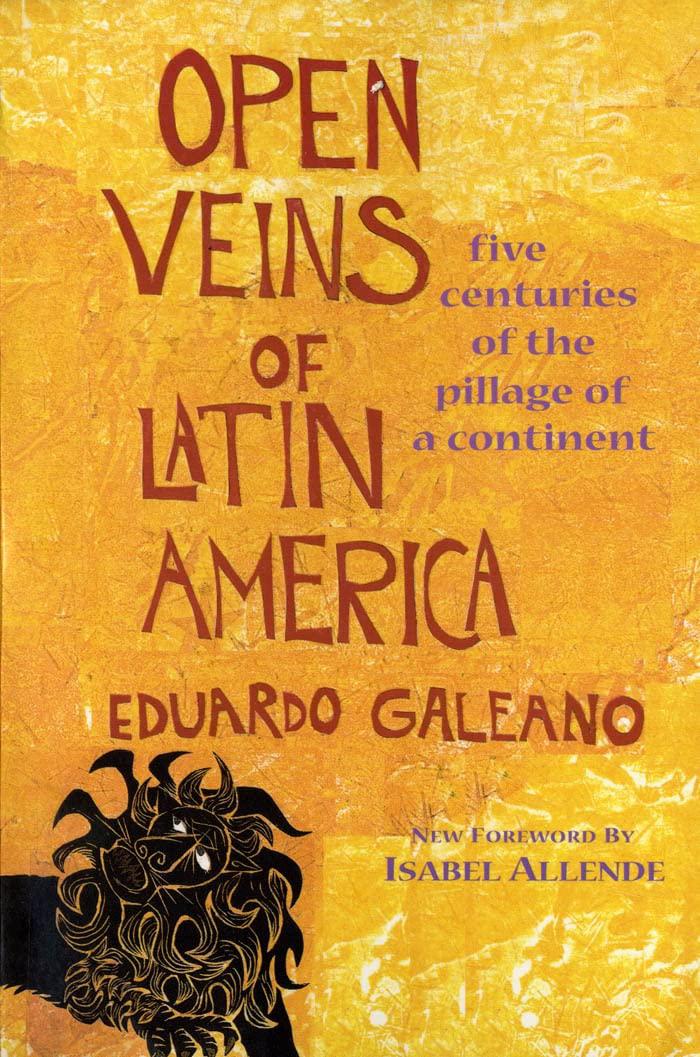
By contrast, the United States of America inherited Europe’s crusading spirit. In the nineteenth century, having achieved its “Manifest Destiny” at home, the U.S. became a Crusading empire. President Woodrow Wilson declared in 1912: “We are chosen and prominently chosen to show the way to the nations of the world how they shall walk in the path of liberty.”[66] Dwight Eisenhower titled his memoirs Crusade in Europe. Christopher Tyerman defines the medieval Crusades as “wars justified by faith conducted against real or imagined enemies defined by religious and political elites as perceived threats to the Christian faithful.”[67] That today crusades are launched in the name of Democracy rather than Christianity is the only difference.
But how did the United States inherit the Crusade gene if, unlike Latin American countries, they had negligible direct Catholic roots? To explain this paradox, I propose a detour through France.
Detour Through the French Enlightenment
The Crusade was a French specialty. Crusaders were always known in the East as Franks, and French was the main language in the Latin Levant. The First Crusade was “God’s acts through the Franks” (Gesta Dei per Francos) as Guibert of Nogent titled his chronicle. The Second Crusade was the Crusade of King Louis VII. According to Christopher Tyerman, “This international adventure conferred on Louis and his dynasty the reality of national rule,” including as the pretext for an unprecedented general tax.[68] The two crusades of pious Louis IX were equally important in the construction of France. “By 1300, crusading had been claimed almost as a national prerogative, an enterprise in which the king of France held the major shareholding.”[69]
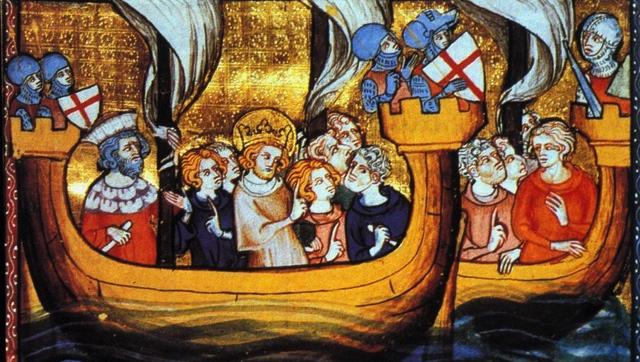
The Crusade, therefore, had a special impact on French national identity. This, of course, was the result of a unique alliance between the papacy and the French monarchy, which made Pope Gregory IX write to Louis IX in 1239:
[God] chose France, in preference to all the other nations of the earth, for the protection of the Catholic faith and for the defense of religious freedom. … As formerly the tribe of Judah received a very special blessing from on high among the other sons of the patriarch Jacob, likewise the Kingdom of France is above all other peoples, crowned by God himself with extraordinary prerogatives. The tribe of Judah was the anticipated figure of the Kingdom of France.[70]
France’s inheritance of Israel’s chosenness, symbolized by the ritual unction of the king after the Biblical model, became a recurrent them of papal flattery.[71]
This unique providential mission of the French kingdom was transferred to the French republic after 1789. Although they repudiated Catholic and Monarchic institutions, the revolutionaries preserved, under new clothes, the national messianic faith that had become attached to French identity. What else could they build their new nation upon? France was now chosen to enlighten the world with the new Trinity: Liberté, Égalité, Fraternité. In a speech printed in April 1791, Robespierre thanked the “eternal Providence” who called on the French, “alone since the origin of the world, to restore on earth the empire of Justice and Liberty.”[72]
Although the United States were founded before the French Revolution, they were founded on the ideas of the French Enlightenment, as the Declaration of Independence makes indisputably clear. From that perspective, France, rather than England, is the godmother of the U.S., which took up the mission to bring Democracy to the world. The Puritan mythology, I believe, ranks second in the ingredients of American identity as world power. The Crusade also ran in the Puritans’ blood, but by finding their “new Jerusalem” in Massachusetts, they freed themselves from the attraction of the old one. It is my understanding that the crusading spirit came to the U.S. from the French Enlightenment, heir to Catholicism, rather than from Protestantism. I offer this as a speculative hypothesis.
I do not pretend to have isolated the unique factor that drove the U.S. to crusade the world since WWI. But I hope to have shown that its irresistible crusading habitus results in part from a very peculiar history that started in the eleventh century. If not, I hope at least to have argued convincingly that understanding the essence and the impact of the medieval Crusades is helpful for us Westerners to know who we are. And if I haven’t, I hope this was interesting anyway.

By Laurent Guyenot
Published by Unz.com
Republished by The 21st Century
The views expressed in this article are solely those of the author and do not necessarily reflect the opinions of 21cir.com
Notes
[1] This is, of course, shared by most philosophers of civilizations, and notoriously Oswald Spengler, who called the West the “Faustian” civilization.
[2] The archetypal example is given in the Hebrew Bible, where we read, again and again, how the Levites (originally Moses’s personal guard) subjugate a reluctant and incorrigibly “idolatrous” people. Ultimately, the character of Israel is the character imposed on Israel by the Levites. That character has changed very little over centuries.
[3] Jonathan Riley-Smith, The First Crusade and the Idea of Crusading, University of Philadelphia Press, 1986, p. 47.
[4] Christopher Tyerman, God’s War: A New History of the Crusades, Penguin, 2006, p. 885.
[5] Norman Housley, Contesting the Crusades, Blackwell Publishing, 2006, p. 144.
[6] Housley, Contesting the Crusades, pp. 154-155.
[7] Paul Alphandéry et Alphonse Dupront, La Chrétienté et l’idée de croisade, Paris, Albin Michel, 1954-1959, nouv. éd. 1995, kindle l. 311.
[8] As noted by Oswald Spengler, Decline of the West, pp. 10 and 27.
[9] Tyerman, God’s War, p. 244.
[10] Steven Runciman, A History of the Crusades, vol. 2: The Kingdom of Jerusalem and the Frankish East, 1100-1187, Cambridge UP, 1951 (on archive.org), p. 253.
[11] Laurent Guyénot, La Lance qui saigne: Hypertextes et métatextes du ‘Conte du Graal’, Champion, 2011.
[12] Steven Runciman, A History of the Crusades, vol. 1: The First Crusade and the Foundation of the Kingdom of Jerusalem, The Folio Society, 1994 (on archive.org), p. xi.
[13] Jérôme Baschet, La Civilisation féodale. De l’an mil à la colonisation de l’Amérique, Flammarion, 2006, p. 373.
[14] Tyerman, God’s War, p. 825
[15] Riley-Smith, The First Crusade and the Idea of Crusading, p. 28.
[16] Louise and Jonathan Riley-Smith, ed. and trans., The Crusades. Ideas and Reality, 1095-1274, Edward Arnold, 1981, p. 37.
[17] https://sourcebooks.fordham.edu/source/urban2-5vers.asp
[18] https://sourcebooks.fordham.edu/source/urban2-5vers.asp
[19] Riley-Smith, The First Crusade and the Idea of Crusading, p. 1.
[20] Jonathan Riley-Smith, What were the Crusades? third edition, Ignatius Press, 2002, p. 62.
[21] Tyerman, God’s War, p. 827.
[22] Tyerman, God’s War, p. 756.
[23] https://sourcebooks.fordham.edu/source/urban2-5vers.asp
[24] Tyerman, God’s War, p. 481.
[25] Tyerman, God’s War, p. 888.
[26] Housley, Contesting the Crusades, p. 148.
[27] Paul Alphandéry et Alphonse Dupront, La Chrétienté et l’idée de croisade, Albin Michel, 1954-1959, nouvelle édition, 1995, p. 419.
[28] François Pierre Guillaume Guizot, General History of Civilization in Europe, D’Appleton & Co, 1896, on oll.libertyfund.org/title/knight-general-history-of-civilization-in-europe
[29] Riley-Smith, The First Crusade and the Idea of Crusading, p. 20.
[30] Riley-Smith, The First Crusade and the Idea of Crusading, pp. 22, 24.
[31] Runciman, A History of the Crusades, vol. 1, p. 23.
[32] Raymond d’Aguilers, Histoire des Francs qui prirent Jérusalem. Chronique de la première croisade, Les Perséides, 2004, p. 165.
[33] Tyerman, God’s War, p. 158.
[34] Tyerman, God’s War, p. 168.
[35] Jonathan Harris, Byzantium and the Crusades, 2nd ed., Bloomsbury Academic, 2014, kindle l. 4153-62.
[36] Tyerman, God’s War, p. 812.
[37] Tyerman, God’s War, p. 827.
[38] It is defended by Paul Strathern in Napoleon in Egypt, Bantam Books, 2009, pp. 353-356.
[39] Look also at the 2021 Haaretz article titled “When Napoleon Was About to Declare a Jewish State in Palestine,” www.haaretz.com/israel-news/2021-07-11/ty-article-magazine/.premium/when-napoleon-was-about-to-declare-a-jewish-state-in-palestine/0000017f-e18b-df7c-a5ff-e3fbe5480000
[40] Tyerman, God’s War, p. 84.
[41] Tyerman, God’s War, p. 477.
[42] Robert I. Moore, The First European Revolution, c. 970-1215, Basil Blackwell, 2000.
[43] Norman Cantor, The Civilization of the Middle Ages, HarperPerennial, 1994, pp. 290-291.
[44] Tyerman, God’s War, pp. 7-8. Also p. 74.
[45] This episode and its significance is studied in Georges Duby, The Knight, The Lady, and the Priest: The Making of Modern Marriage in Medieval France, Pantheon Books, 1981.
[46] Housley, Contesting the Crusades, p. 164.
[47] Robert I. Moore, The Formation of a Persecuting Society: Authority and Deviance in Western Europe 950-1250, second edition, Blackwell Publishing, 2007.
[48] Runciman, History of the Crusades, vol. 1, p. 96
[49] Runciman, A History of the Crusades, vol. 2 : The Kingdom of Jerusalem and the Frankish East, 1100-1187, Cambridge UP, 1951, p. 275.
[50] George Ostrogorsky, History of the Byzantine State, Rutgers UP, revised edition, 1969, p. 414.
[51] Steven Runciman, A History of the Crusades, vol. 3: The Kingdom of Acre and the Later Crusades (1954), Penguin Classics, 2016, p. 131.
[52] Runciman, A History of the Crusades, vol. 1, p. 42.
[53] Runciman, A History of the Crusades, vol. 2, pp. 274-275.
[54] Runciman, A History of the Crusades, vol. 2, p. 281.
[55] Runciman, A History of the Crusades, vol. 2, p. 284-285.
[56] Tyerman, God’s War, p. 343.
[57] Housley, Contesting the Crusades, p. 158.
[58] Jack Shaheen, Real Bad Arabs: How Hollywood Vilifies a People, Olive Branch Press, 2012. Watch also the documentary of the same title.
[59] Joshua Prawer, The Latin Kingdom of Jerusalem: European Colonialism in the Middle Ages, Weidenfeld and Nicolson, 1972, p. ix. See also George Demacopoulos, Colonizing Christianity: Greek and Latin Religious Identity in the Era of the Fourth Crusade, Fordham UP, 2019.
[60] Tyerman, God’s War, p. 676.
[61] Carol Delaney, Columbus and the Quest for Jerusalem, Free Press, 2012, kindle l. 228.
[62] Delaney, Columbus and the Quest for Jerusalem, l. 86.
[63] Carol Delaney, “Columbus’s Ultimate Goal: Jerusalem,” on www.amherst.edu/system/files/columbus.pdf
[64] Norman Cantor, The Civilization of the Middle Ages, HarperPerennial, 1994, p. 290.
[65] Frank Jacob and Riccardo Altieri, “Missionaries or Crusaders? – The Self-Reception of the Spanish Conquistadors in the 16th and 17th Century,” City University of New York, 2015, academicworks.cuny.edu/cgi/viewcontent.cgi?article=1018&context=qb_pubs
[66] Wilson Center, www.wilsoncenter.org/about-woodrow-wilson
[67] Christopher Tyerman, God’s War, p. xiii.
[68] Tyerman, God’s War, pp. 276-277.
[69] Tyerman, God’s War, p. 909.
[70] https://laportelatine.org/formation/magistere/lettre-gregoire-ix-a-saint-louis-1239-bulle-dei-filius
[71] In 1311, Pope Clement V declared: “Just as the Israelites are known to have granted the Lord’s inheritance by the election of Heaven, to perform the hidden wishes of God, so the kingdom of France has been chosen as the Lord’s special people” (Tyerman, God’s War, p. 909).
[72] Auguste Valmorel, Œuvres de Robespierre, 1867 (sur fr.wikisource.org), p. 71.
